
Australian Light Horse were mounted troops with characteristics of both cavalry and mounted infantry, who served in the Second Boer War and World War I. During the inter-war years, a number of regiments were raised as part of Australia's part-time military force. These units were gradually mechanised either before or during World War II, although only a small number undertook operational service during the war. A number of Australian light horse units are still in existence today.

The Sherwood Rangers Yeomanry (SRY) was a British Yeomanry regiment. In 1967 it was amalgamated with other units to form the Royal Yeomanry (RY), a light cavalry regiment of the Army Reserve. Originally raised as the Nottinghamshire Yeomanry Cavalry in 1794, the regiment was used on several occasions in the 19th century to maintain law and order. During the Second Boer War and both World Wars the regiment earned 44 battle honours. It is now one of the six squadrons of the Royal Yeomanry (RY), a light cavalry regiment of the Army Reserve. Designated as 'A' Squadron, the Sherwood Rangers Yeomanry's current role is to support the Light Cavalry Regiments on operations by providing reconnaissance soldiers.

Queen Alexandra's Mounted Rifles (QAMR) is an armoured regiment of the New Zealand Army and forms part of the Royal New Zealand Armoured Corps. The regiment was formed in 1864 and is currently an armoured cavalry unit equipped with NZLAV.
The Waikato Mounted Rifles (WMR) is the New Zealand Army's only Territorial Force squadron of the Royal New Zealand Armoured Corps (RNZAC). The Squadron's origins can be traced back to 1869 when the first mounted unit was raised in the Waikato. Today the Squadron is part of Queen Alexandra's Mounted Rifles (QAMR) where it forms the regiment's reserve squadron. WMR's role is mounted reconnaissance and surveillance.
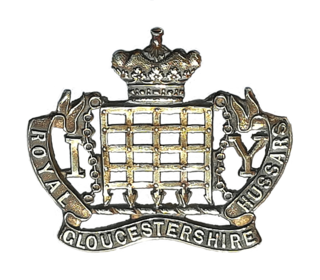
The Royal Gloucestershire Hussars was a volunteer yeomanry regiment which, in the 20th century, became part of the British Army Reserve. It traced its origins to the First or Cheltenham Troop of Gloucestershire Gentleman and Yeomanry raised in 1795, although a break in the lineage means that its formation is dated to the Marshfield and Dodington Troop raised in 1830. Six further troops – officered by nobility and gentry, and recruited largely from among landholders and tenant farmers – were subsequently raised in Gloucestershire, and in 1834 they came together to form the Gloucestershire Yeomanry Cavalry. In 1847, the regiment adopted a hussar uniform and the name Royal Gloucestershire Hussars. Originally intended to counter insurrection and a French invasion that never materialised, the yeomanry's first deployments were ceremonial and as mounted police during times of civil unrest. Three Gloucestershire troops were deployed to Bristol on two separate occasions in the 1830s in support of the civil authorities.

The Derbyshire Yeomanry was a yeomanry regiment of the British Army, first raised in 1794, which served as a cavalry regiment and dismounted infantry regiment in the First World War and provided two reconnaissance regiments in the Second World War, before being amalgamated with the Leicestershire Yeomanry to form the Leicestershire and Derbyshire Yeomanry in 1957.

The Royal Wiltshire Yeomanry (RWY) was a Yeomanry regiment of the Kingdom of Great Britain and the United Kingdom established in 1794. It was disbanded as an independent Territorial Army unit in 1967, a time when the strength of the Territorial Army was greatly reduced. The regiment lives on in B Squadron of the Royal Wessex Yeomanry.

The 3rd County of London Yeomanry (Sharpshooters) was a Yeomanry regiment of the British Army. It was raised in 1901 from Second Boer War veterans of the Imperial Yeomanry. During the First World War it served dismounted at Gallipoli, was remounted to serve in Macedonia, Egypt and Palestine, before being converted to machine gunners for service on the Western Front. 2nd and 3rd Line units remained in the United Kingdom throughout.
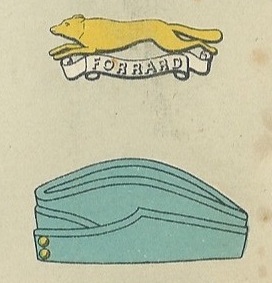
The East Riding of Yorkshire Yeomanry was a unit of the British Army formed in 1902. Units of Yeomanry Cavalry were raised in the East Riding of Yorkshire in the 18th and early 19th centuries at times of national emergency: the Jacobite Rising of 1745, the French Revolutionary Wars and the Napoleonic Wars. These were stood down once each emergency was over. The East Riding of Yorkshire Yeomanry, was established in 1902, and this saw action during the First World War both in the mounted role and as machine gunners.
The Royal East Kent Yeomanry was a British Army regiment formed in 1794. It saw action in the Second Boer War and the First World War.

The Queen's Own West Kent Yeomanry was a British Army regiment formed in 1794. It served in the Second Boer War and the First World War. It amalgamated with the Royal East Kent Yeomanry to form the Kent Yeomanry in 1920.
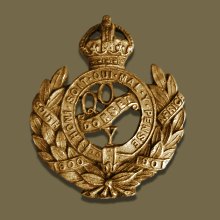
The Queen's Own Dorset Yeomanry was a yeomanry regiment of the British Army founded in 1794 as the Dorsetshire Regiment of Volunteer Yeomanry Cavalry in response to the growing threat of invasion during the Napoleonic wars. It gained its first royal association in 1833 as The Princess Victoria's Regiment of Dorset Yeomanry Cavalry, and its second, in 1843, as the Queen's Own Regiment of Dorset Yeomanry Cavalry.
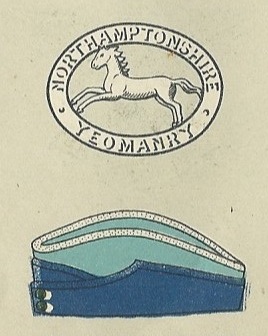
The Northamptonshire Yeomanry was a Yeomanry regiment of the British Army, formed in 1794 as volunteer cavalry. It served in the Second Boer War, the First World War and the Second World War before being reduced to squadron level in 1956. It ceased to have a separate existence in 1971.

The Middlesex Yeomanry was a volunteer cavalry regiment of the British Army originally raised in 1797. It saw mounted and dismounted action in the Second Boer War and in the First World War at Gallipoli, Salonika and in Palestine, where one of its officers won a Victoria Cross at the Battle of Buqqar Ridge and the regiment rode into Damascus with 'Lawrence of Arabia'. Between the world wars the regiment was converted to the signals role and it provided communications for armoured formations in the Second World War, including service in minor operations in Iraq, Palestine, Syria and Iran, as well as the Western Desert, Italian and North-West European campaigns. It continued in the postwar Territorial Army and its lineage is maintained today by 31 Signal Squadron, Royal Corps of Signals, which forms part of the Army Reserve.

The 3rd (Auckland) Mounted Rifles was formed on March 17, 1911. They were mobilised during the First World War as a squadron of the Auckland Mounted Rifles Regiment. They served in the Middle Eastern theatre of World War I and first saw action during the Battle of Gallipoli. As a part of the larger New Zealand Mounted Rifles Brigade they went on to serve in the Sinai and Palestine Campaign.

The 6th (Manawatu) Mounted Rifles was formed on March 17, 1911. They were mobilised during World War I as a squadron of the Wellington Mounted Rifles Regiment. They served in the Middle Eastern theatre of World War I and first saw action during the Battle of Gallipoli. As a part of the larger New Zealand Mounted Rifles Brigade, they went on to serve in the Sinai and Palestine Campaign.
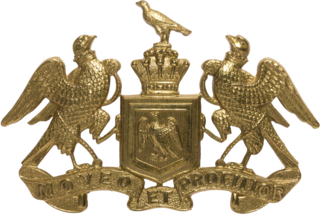
The 8th Mounted Rifles was formed on March 17, 1911. They were mobilised during World War I as a squadron of the Canterbury Mounted Rifles Regiment. They served in the Middle Eastern theatre of World War I and first saw action during the Battle of Gallipoli. As a part of the larger New Zealand Mounted Rifles Brigade they went on to serve in the Sinai and Palestine Campaign.

The 9th Mounted Rifles Regiment was officially raised on March 17, 1911. It was one of 12 regionally based mounted rifles regiments formed as part of the new Territorial Force (TF) organisation that came into existence on that day. This part-time Territorial Force and a tiny regular force of professional soldiers formed the basis of New Zealand’s army at the outbreak of the First World War.

The 10th (Nelson) Mounted Rifles, previously known as the 1st Regiment, Nelson Mounted Rifles was a military unit based in Nelson, New Zealand. They served in the Middle Eastern theatre of World War I and first saw action during the Battle of Gallipoli. As a part of the larger New Zealand Mounted Rifles Brigade they went on to serve in the Sinai and Palestine Campaign.

The 11th Mounted Rifles was formed on 17 March 1911. They were mobilised during World War I as a squadron of the Auckland Mounted Rifles Regiment. They served in the Middle Eastern theatre of World War I and first saw action during the Battle of Gallipoli. As a part of the larger New Zealand Mounted Rifles Brigade they went on to serve in the Sinai and Palestine campaign.



















